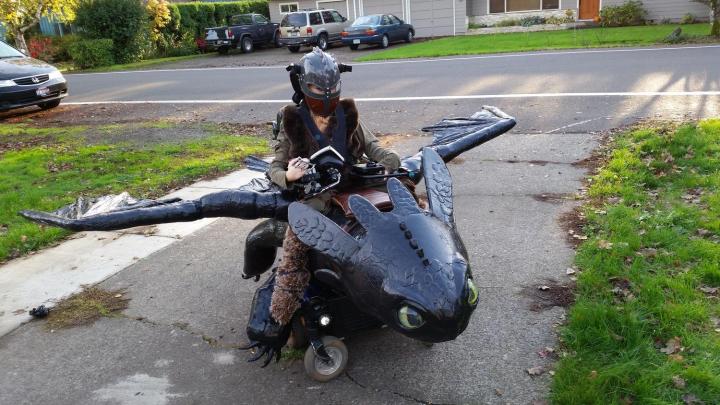
The brains behind the Magic Wheelchair, Ryan & Lana Weimer, began the project as a personal endeavor for their own children, three of whom are confined to wheelchairs as a result of their spinal muscular atrophy. In 2008, Ryan asked one of his sons what he wanted to be for Halloween, and when he answered, “a pirate,” Weimer began constructing a costume that involved not only clothing, but a ship as well. Now, seven years later, the Weimers are applying the same grandiose concept to kids all over the world, and they recently launched a successful Kickstarter campaign to fund it all.
The Magic Wheelchair website explains, “Kids, with their parents’ permission, submit a 1-3 minute video telling us what they want to be for Halloween and why they should be selected … We will review the submissions and select 5 children, who will then work with designers and builders to create the ultimate wheelchair costume in time for Halloween!”
With the inherent challenges that come from being in a wheelchair, the team behind this incredible initiative wanted to be sure that at least once a year, children were able to view their chairs not as a crutch, but as an integral part of a whole new world of creation and creativity. “It is important to us,” the Magic Wheelchair notes, “that the costumes are not just another Halloween costume … we want to make something epic of which the kids and designers can be proud.” And with costumes like these, there is plenty to be proud of.


